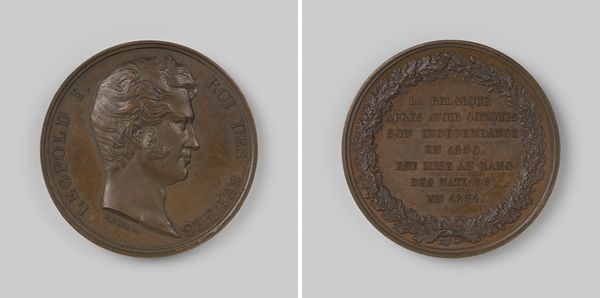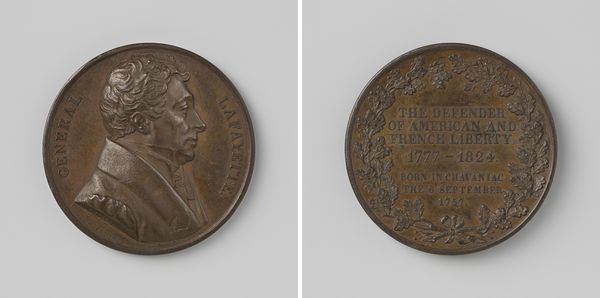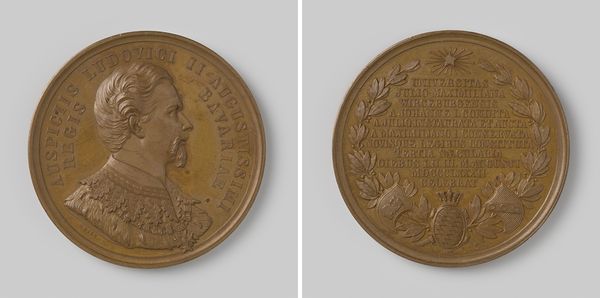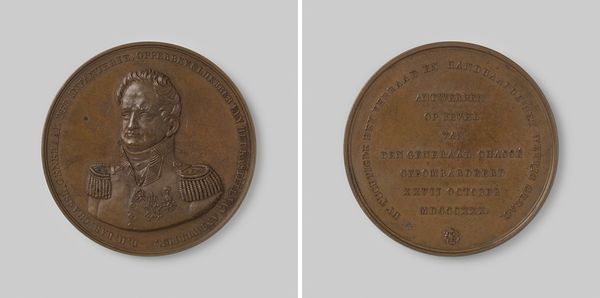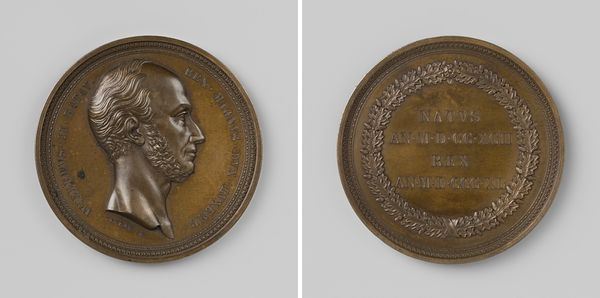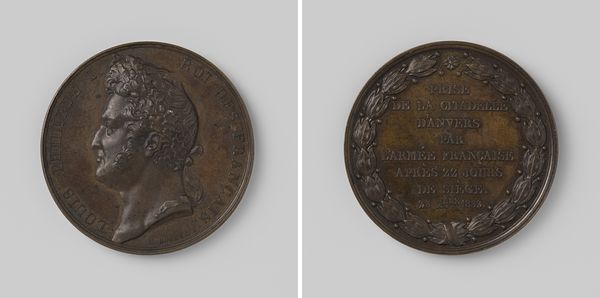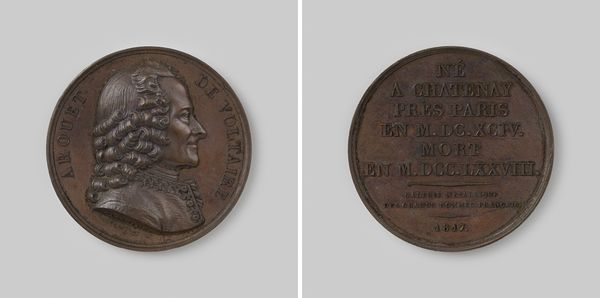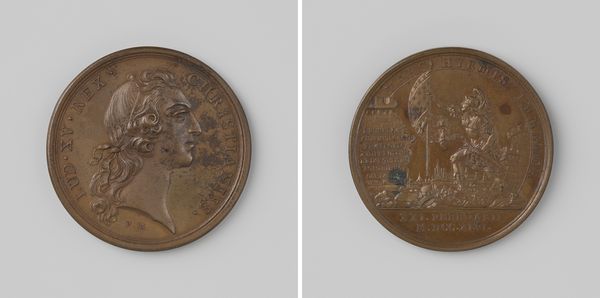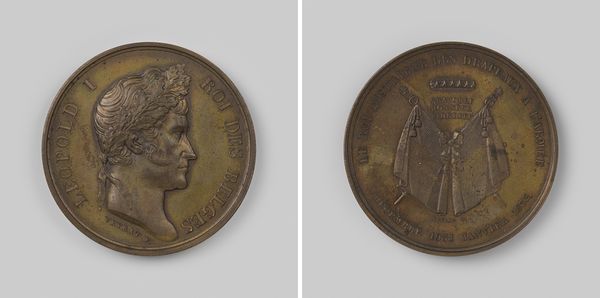
Hulp van het Franse leger onder leiding van maarschalk Gerard aan België, terere van Lodewijk Filips, koning der Fransen 1831
0:00
0:00
bronze, sculpture
#
portrait
#
medal
#
neoclassicism
#
sculpture
#
bronze
#
sculpture
#
history-painting
Dimensions: diameter 4.1 cm, weight 38.73 gr
Copyright: Rijks Museum: Open Domain
Curator: Let's discuss this bronze medal, "Help from the French Army under the command of Marshal Gerard to Belgium, era of Louis Philippe, King of the French," created in 1831 by Adrien Hippolyte Veyrat. Editor: This looks like an interesting commemorative medal. The contrast between the profile portrait and the inscription on the reverse is striking. I’m curious – what stands out to you about this piece? Curator: I immediately notice the material. Bronze as a medium connects it to classical traditions and speaks to the ambition of permanence. Medals were often cast, implying a production process rooted in replication, not the singular artistic act that privileges individual expression. The social context, specifically the political maneuverings surrounding Belgian independence and the French intervention, are equally key to its making and interpretation. The medal wasn’t simply “made;” it was manufactured. Consider what social functions it performs. How does the use of bronze as a "cheaper" substitute to precious metals inform or transform meaning? Editor: That makes sense. It’s not just about the imagery, but the material choices themselves and how they relate to mass production and consumption. The historical context is also really helpful. I hadn’t considered how bronze’s perceived “value” influenced the impact of the medal. Is there a statement on accessibility here? Curator: Precisely! What does this seemingly widespread production suggest to us about intended audiences, and the politics behind this artistic undertaking? And why create an object like this in the first place, in response to an event such as military assistance? Editor: Now I’m thinking about the role of this object – how many were made? Who received them? I'm starting to understand the complexities of the interplay between materiality, production, and the political messages these objects carried. Curator: Exactly. Examining this medal is not only about looking at its surface. We have to ask ourselves, how does its construction – bronze, casting, the replication process – interact with the history it attempts to portray? Editor: This really opened my eyes to analyzing art beyond the surface, delving into its materials, the making process, and the wider historical and social circumstances shaping it. Thanks!
Comments
No comments
Be the first to comment and join the conversation on the ultimate creative platform.
